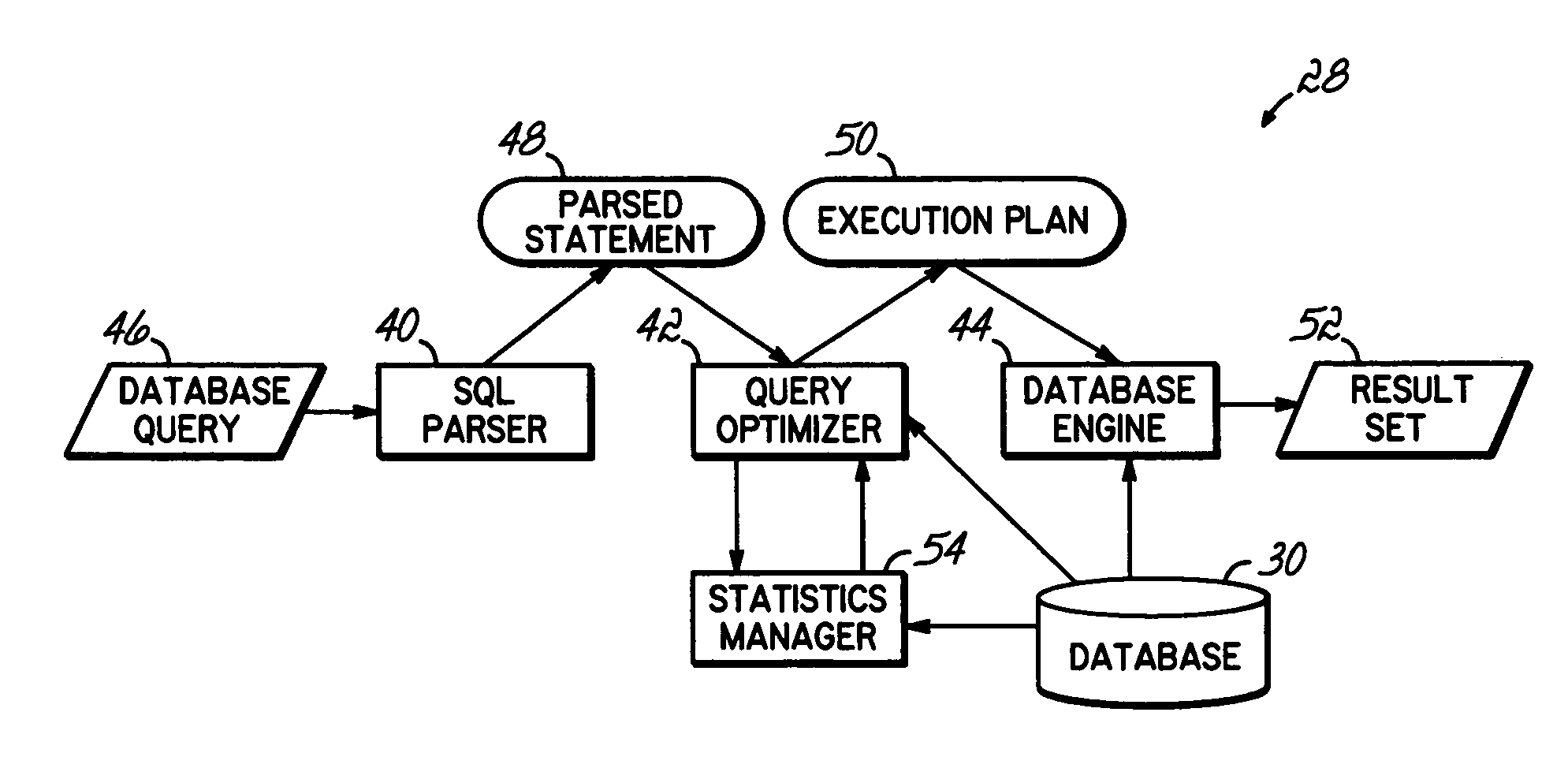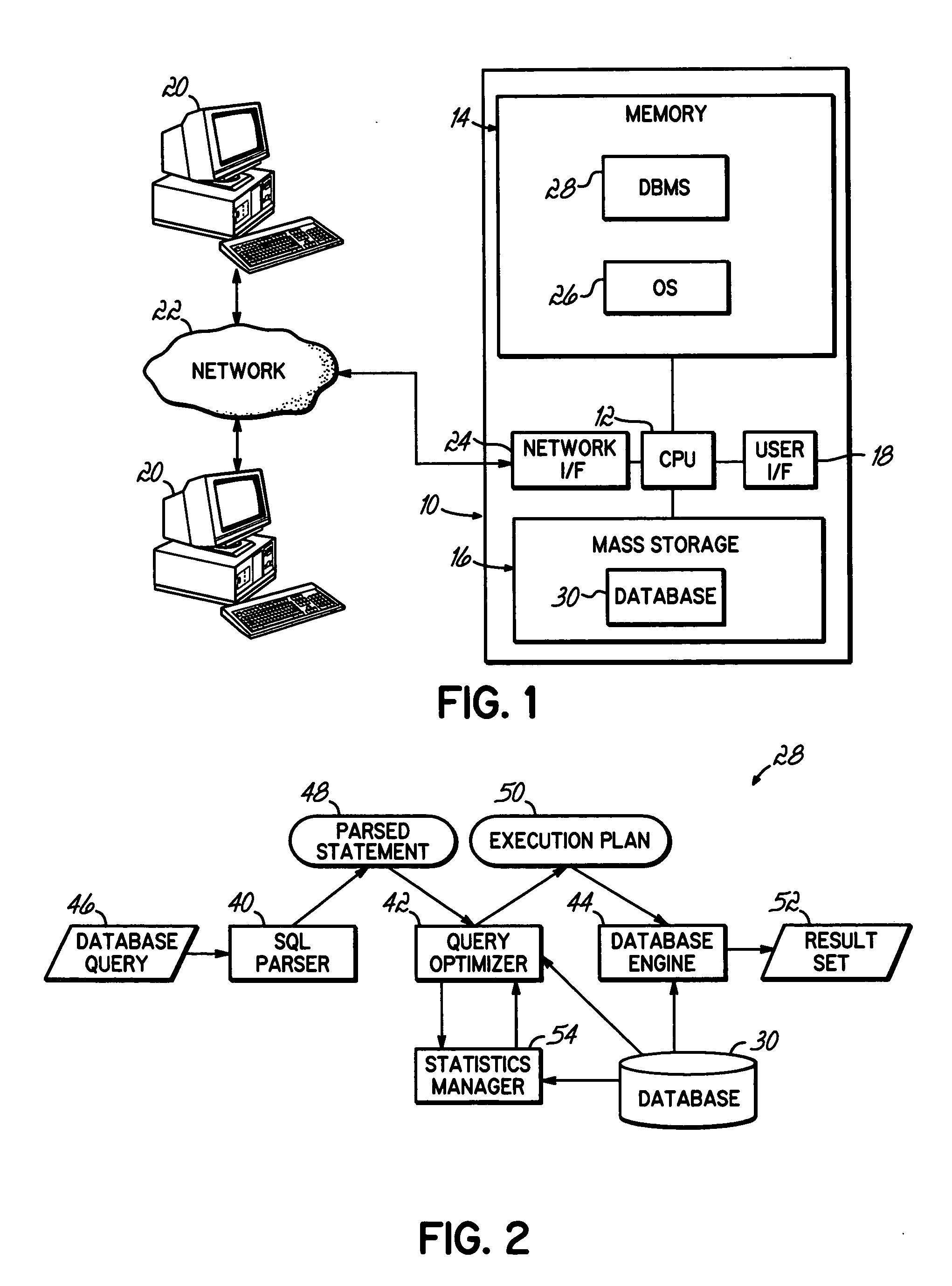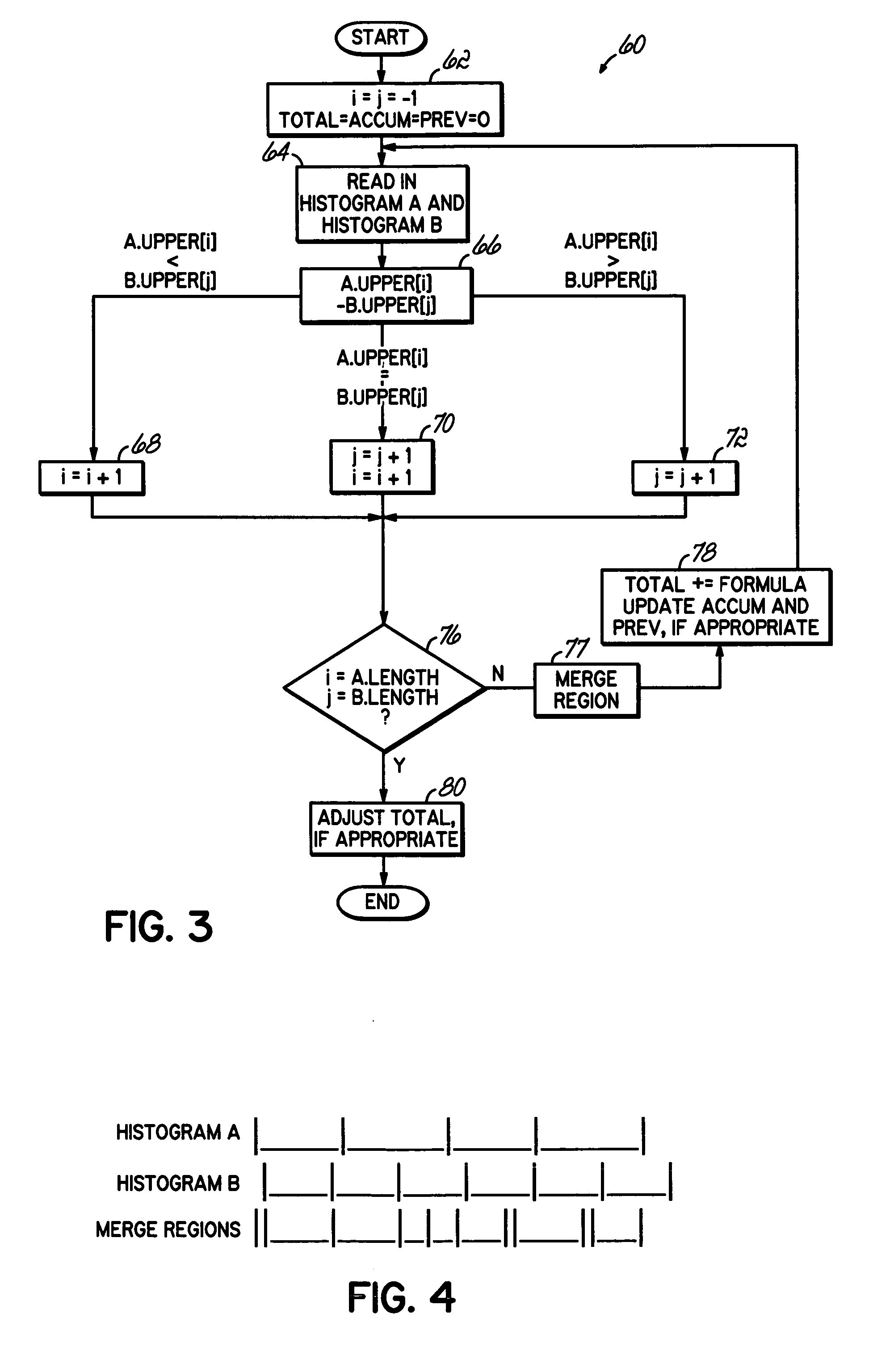Estimating the size of a join by generating and combining partial join estimates
- Summary
- Abstract
- Description
- Claims
- Application Information
AI Technical Summary
Benefits of technology
Problems solved by technology
Method used
Image
Examples
Embodiment Construction
[0026] The embodiments discussed hereinafter calculate a join size estimate by generating partial join estimates and combining the partial join estimates. A join size estimate may estimate, for example, the number of records that may be returned when the data values of a first table are equal to, less than, less than or equal to, more than, and / or more than or equal to data values of a second table. Generally, the formulas described below to estimate join sizes are robust in nature, i.e., they produce consistent estimates. Robust formulas to calculate join size estimates for each of the aforementioned relationships are included herein and will be discussed in connection with routine 60 in FIG. 3.
[0027] As noted above, a join size estimate maybe based upon the combination of multiple partial join estimates. A partial join estimate in this regard may be any intermediate estimate calculated using a merge region in generating the join size estimate. A merge region may be any region for...
PUM
 Login to View More
Login to View More Abstract
Description
Claims
Application Information
 Login to View More
Login to View More - R&D
- Intellectual Property
- Life Sciences
- Materials
- Tech Scout
- Unparalleled Data Quality
- Higher Quality Content
- 60% Fewer Hallucinations
Browse by: Latest US Patents, China's latest patents, Technical Efficacy Thesaurus, Application Domain, Technology Topic, Popular Technical Reports.
© 2025 PatSnap. All rights reserved.Legal|Privacy policy|Modern Slavery Act Transparency Statement|Sitemap|About US| Contact US: help@patsnap.com



